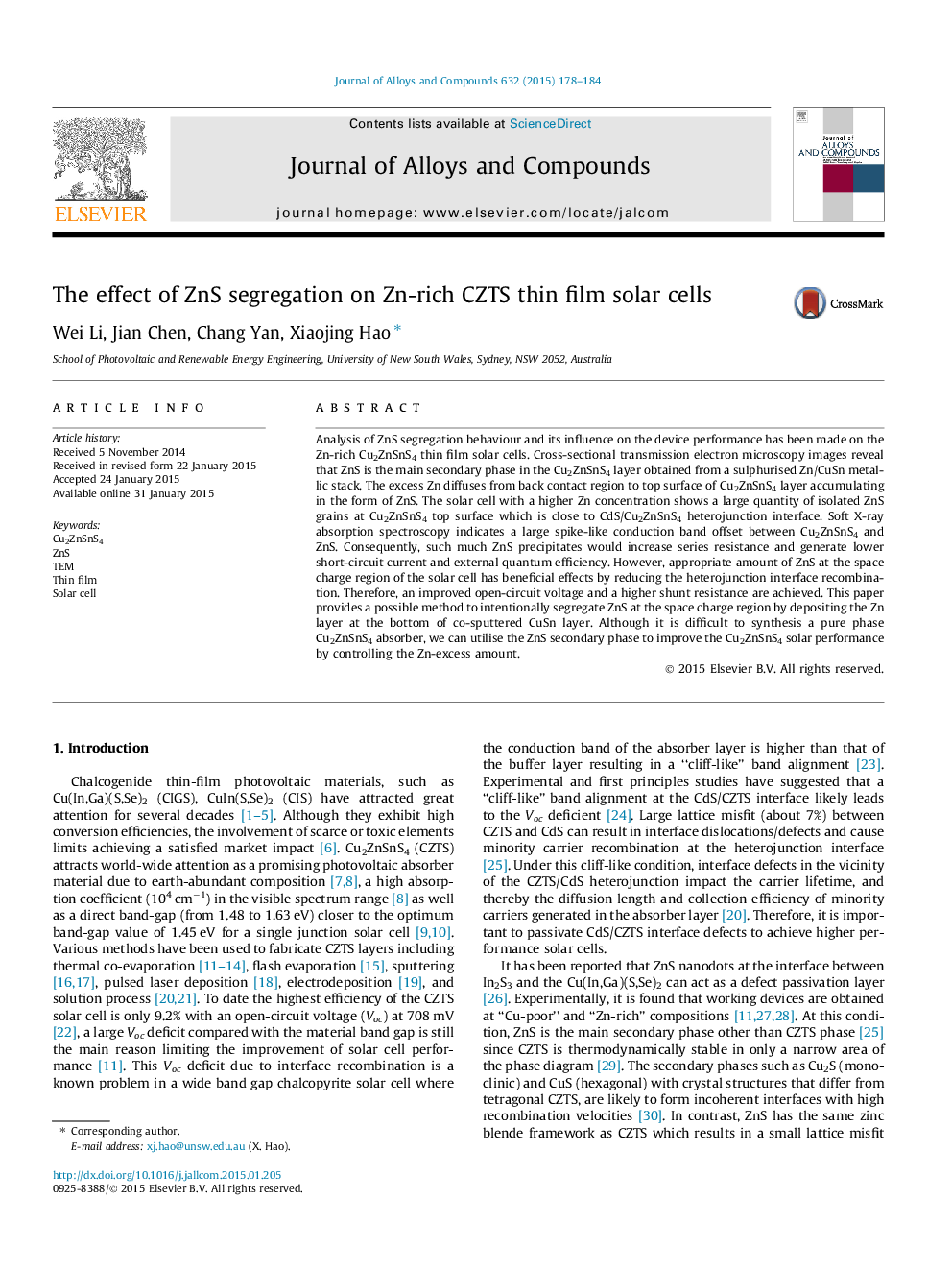| Article ID | Journal | Published Year | Pages | File Type |
|---|---|---|---|---|
| 7999051 | Journal of Alloys and Compounds | 2015 | 7 Pages |
Abstract
Analysis of ZnS segregation behaviour and its influence on the device performance has been made on the Zn-rich Cu2ZnSnS4 thin film solar cells. Cross-sectional transmission electron microscopy images reveal that ZnS is the main secondary phase in the Cu2ZnSnS4 layer obtained from a sulphurised Zn/CuSn metallic stack. The excess Zn diffuses from back contact region to top surface of Cu2ZnSnS4 layer accumulating in the form of ZnS. The solar cell with a higher Zn concentration shows a large quantity of isolated ZnS grains at Cu2ZnSnS4 top surface which is close to CdS/Cu2ZnSnS4 heterojunction interface. Soft X-ray absorption spectroscopy indicates a large spike-like conduction band offset between Cu2ZnSnS4 and ZnS. Consequently, such much ZnS precipitates would increase series resistance and generate lower short-circuit current and external quantum efficiency. However, appropriate amount of ZnS at the space charge region of the solar cell has beneficial effects by reducing the heterojunction interface recombination. Therefore, an improved open-circuit voltage and a higher shunt resistance are achieved. This paper provides a possible method to intentionally segregate ZnS at the space charge region by depositing the Zn layer at the bottom of co-sputtered CuSn layer. Although it is difficult to synthesis a pure phase Cu2ZnSnS4 absorber, we can utilise the ZnS secondary phase to improve the Cu2ZnSnS4 solar performance by controlling the Zn-excess amount.
Keywords
Related Topics
Physical Sciences and Engineering
Materials Science
Metals and Alloys
Authors
Wei Li, Jian Chen, Chang Yan, Xiaojing Hao,
